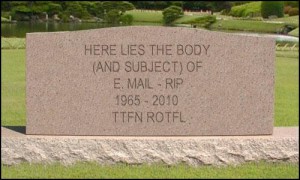Marketing Automation & Reputation Management Go Hand In Hand
 It’s never fun or easy talking about what will happen to your business if your products or services are panned on the web somewhere – i.e., if your reputation management is on high alert because of a bad review. Let’s take Yelp reviews, for instance. If you’re a fan of the popular US version of Gordon Ramsay’s Kitchen Nightmares, you know how resistant some business owners can be to change.
It’s never fun or easy talking about what will happen to your business if your products or services are panned on the web somewhere – i.e., if your reputation management is on high alert because of a bad review. Let’s take Yelp reviews, for instance. If you’re a fan of the popular US version of Gordon Ramsay’s Kitchen Nightmares, you know how resistant some business owners can be to change.
Ramsay’s latest airings show him confronting “stuck” business owners with negative Yelp ratings. Many owners, rather than taking their customers’ complaints seriously, would rather tell themselves that “not everyone likes the food” rather than changing things they know don’t work about their businesses.
Are You Watching?
Some of us watch programs like these and think, What morons! How can these people not see their own business failings! Truthfully, even a business that’s turning a profit has failings, and reputation management is often a stumbling block for many business owners.
If you’re not watching Google, social media outlets and the news, you might be missing customer complaints. Just one unresolved customer complaint can turn into a reputation management fiasco for a company. So, given the complexity of your current marketing campaigns and what little time we all have in a day, how can you make sure your reputation is being managed properly?
How Marketing Automation Affects Reputation Management
To succeed in today’s competitive business place – particularly if you’re monitoring your reputation – your marketing message has to be socialized. This means that the core points that make your product compelling should be laid out as part of your social media strategy. This also means you need to be watching your customers.
When you use marketing automation to maintain your brand, you have the ability to pinpoint specific users who spend time on your website. If they’re coming from a bad Yelp review by the droves, you’ll be able to set up an alert that gives you this information immediately. Social signals translate to users spending time on your site. If a customer needs to be taken care of via Facebook or Twitter, you can use socialized marketing automation tools to stay on top of resolving your customers’ complaints.
Consumers are using social media to air their grievances with business. Good reputation management is all about using the tools available to you to connect with customers and solve difficulties – sometimes even before they happen. Marketing automation can help you keep track of specific customers and integrate your marketing efforts in a way that no other marketing concepts can.
To find out more about socialized marketing tools and how reputation management is informed by marketing automation, contact Lead Liaison for a free consultation today!











